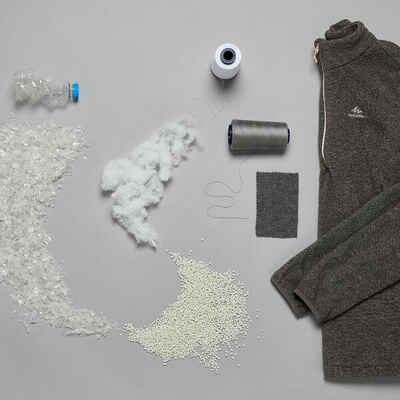WHAT IS YOUR HIKING FREQUENCY AND INTENSITY?
We have classified our products in terms of performance and features for 3 levels of Mountain Walking:
- occasional: around ten hikes per year of about 3 to 4 hours’ duration, less than 10km and less than 700m of elevation gain.
- Regular: about 20 outings per year. 4 to 6 hours, 10 to 20 km, 700 to 1200m of elevation gain per outing.
- Intensive: more than 20 times a year. More than 6 hours, more than 20 km, 1200 to 2000m of elevation gain per outing.
Sole: OUTDOOR CONTACT
New high-performance sole with our new exclusive rubber blend developed by our experts. More grippy, more resistant. The sole is designed for better grip using 3D simulations and then laboratory tested to assess the coefficient of grip on different surfaces and conditions.
WATERPROOFING TEST
In a laboratory, the boot is immersed in water to mid-height on a mechanical arm that flexes to simulates a number of steps. With this test we can determine a time and number of km that the boot can walk while staying dry.
Then we confirm in the field or under the rain, that the shoe meets its promises.
EXTENDING WATERPROOF PERFORMANCE
To keep your feet dry, we advise you to use a waterproof gaiter or mini-gaiter to protect the top of your boots and prevent water, pebbles and sand from getting in.
We advise re-waterproofing your boots twice a year using a re-waterproofing agent (search for ‘waterproofing’ on our Decathlon website) which will help you restore the original water-repellent qualities and help prevent stains on the outside.
PRODUCT DESIGN: OUR EXPERTISE
Our Quechua global design centre is based in Passy, at the foot of Mont-Blanc in Haute Savoie. This location makes it a real meeting place for our teams (designers, product managers, engineers, etc) and outdoor sports enthusiasts. A great asset for designing your mountain walking products and providing you with all our expertise.
WHICH SIZE SHOULD I SELECT?
Some Decathlon stores have a test route.
1. Try on both shoes, standing up, with the socks worn for hiking. 2. Tighten the laces, taking care to correctly balance the tightening.
3. Check two points:
- the heel does not come up before the boot when you walk uphill.
- the foot does not slide and the toes do not press against the front when going downhill.
4. Try on several sizes and models.
Break them in gradually to adapt them to your foot.
CONSEILS D'ACHAT / COMMENT ESSAYER VOS CHAUSSURES ?
Certains magasins Decathlon sont équipes d'un parcours test.
1. Essayez les deux chaussures, debout, avec les chaussettes utilisées pour la randonnée.
2. Serrez les lacets en prenant soin de bien repartir le serrage.
3. Vérifiez deux points :
- le talon ne décolle pas avant la chaussure quand vous marchez en montée.
- le pied ne glisse pas et les orteils ne butent pas à l'avant en descente.
4. Essayez plusieurs tailles et modèles.
Utilisez-les progressivement pour les faire à votre pied.
HOW DO YOU AVOID BLISTERS?
Blisters generally develop when the skin is weakened by friction. In order to prevent them from occurring, we recommend the following: - Choose a shoe in your size.
- Wear suitable socks
- Tie and tighten your shoes properly.
- Make sure you tighten or loosen your laces accordingly while wearing your shoes, especially before starting a climb or a descent.
- Wear your shoes on a short trip for the first use.
WHICH SOCKS ?
A waterproof shoe will be less breathable than a non-waterproof shoe. Mid-length socks like the MH500, MH520 and MH900 are therefore preferable for absorbing perspiration and reducing overheating.
OPTIMISE YOUR BOOT’S CAPACITIES: REPLACE YOUR INSOLES.
The original insole in your boots is designed to accommodate most feet. A change of insole can bring:
1. Improved support: some soles are preformed or reinforced to better support the arch of the foot. 2. More comfort: the insoles can also provide heat and/or cushioning.
3. Longer life: restore the support and comfort of your shoes by replacing the insole each season.
HOW SHOULD YOU LOOK AFTER YOUR BOOTS?
- Leave to air dry.
- Remove dry mud with a stiff brush.
- Clean marks using a brush and some warm water
- Leave to dry
- Spray with a re-waterproofing product to restore the water-resistance to the upper.
 Material
Material